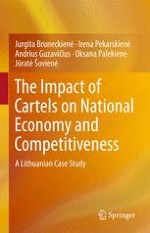2015 | OriginalPaper | Chapter
5. Analysis of the Impact of Cartels on National Economy and Competitiveness
Authors : Jurgita Bruneckienė, Irena Pekarskienė, Andrius Guzavičius, Oksana Palekienė, Jūratė Šovienė
Published in: The Impact of Cartels on National Economy and Competitiveness
Publisher: Springer International Publishing
Activate our intelligent search to find suitable subject content or patents.
Select sections of text to find matching patents with Artificial Intelligence. powered by
Select sections of text to find additional relevant content using AI-assisted search. powered by
